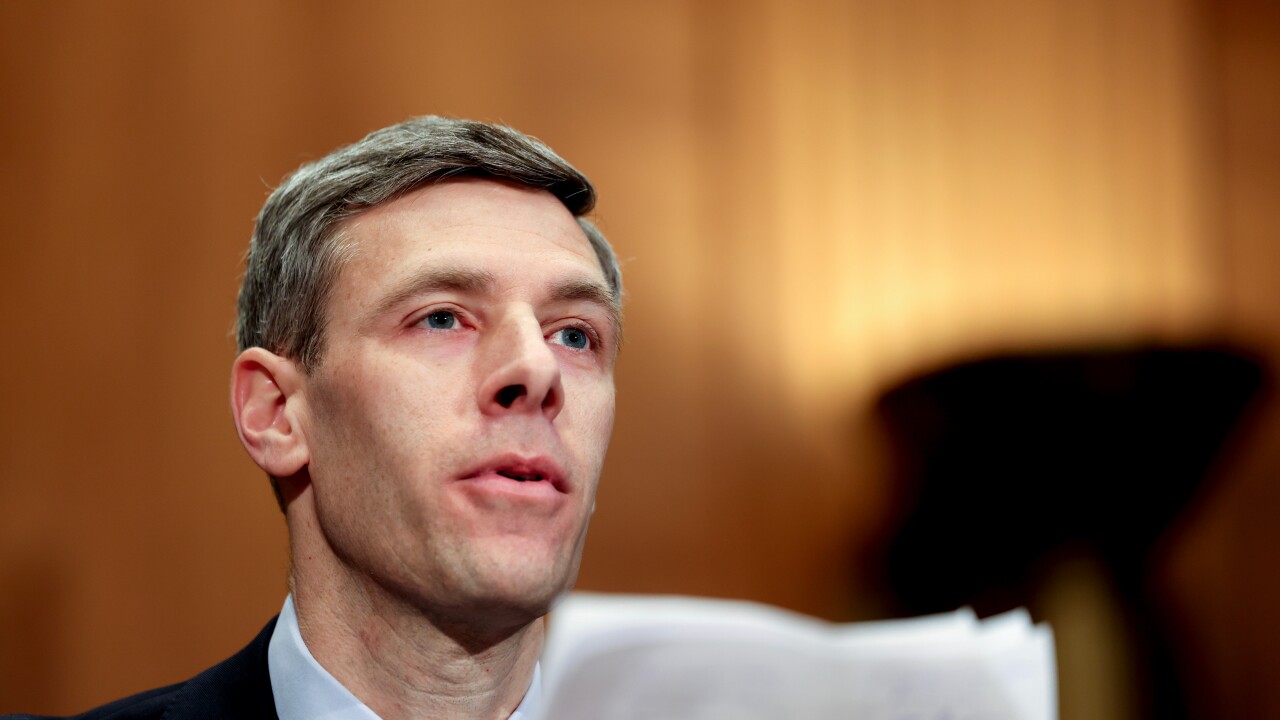-
Great Western Bancorp in Sioux Falls, S.D., plans to record a spike in credit costs during the first quarter as it deals with issues tied to certain commercial loans.
March 10 -
Great Western Bancorp in Sioux Falls, S.D., reported lower profit in its first quarter since completing its initial public offering.
January 30 -
National Australia Bank is looking to sell more than a quarter of its holdings in Great Western Bancorp as part of the Sioux Fall, S.D., company's planned initial public offering.
October 3
When you're a new company on Wall Street, consistency is the name of the game.
Great Western Bancorp in Sioux Falls, S.D., could certainly try and make a big splash after it is spun off from its Australian owner, but the plan for now is business as usual. Still, there will come a time when the once-acquisitive company, which is nearing a key regulatory threshold, uses its newfound currency to revisit deals.
"We've run a pretty boring business," Ken Karels, the $9.7 billion-asset company's president and chief executive, said in a recent interview.
While investors should "expect more of the same going forward" as Great Western adjusts to its independence from National Australia Bank, Karels said acquisitions are "definitely" a part of his company's future. Great Western, which scooped up several institutions during the financial crisis, is in the midst of a three-year hiatus from acquisitions.
When National Australia sells its remaining Great Western shares a move that's widely expected in coming weeks it will mark a new chapter in the U.S. bank's transformation from a small farm lender to a regional player west of the Mississippi.
The 80-year-old company has grown its balance sheet by nearly tenfold in the last decade, while moving into regional industrial centers such as Lincoln, Neb., and Greeley, Colo.Great Western now has roughly 160 branches in seven states.
"It's a really old bank, and it's a much bigger bank than it was only a few years ago," said Tim O'Brien, an analyst at Sandler O'Neill. "It's expanded beyond its traditional footprint, so it's a new bank."
National Australia bought Great Western
"It allowed us to have a larger bank," Karels said. The ownership also allowed Great Western to get into swaps, while providing clients with a broader range of services, he said.
Great Western held its initial public offering in
"Our earnings release is the last week of July, so more likely something could happen if market conditions are still favorable," Karels said, referring to the planned divestment.
When the divestiture is complete, Great Western will stand on its own for the first time as a public company. It's most pressing short-term challenge will be to build a reputation with investors, industry experts said.
"Showing consistent, high performance and accentuating the strengths of the bank" will be management's first priority, O'Brien said.
The company has already started to generate investor buzz since its IPO.Its 51.7% efficiency ratio puts it well ahead of similar sized companies, O'Brien said.
Great Western, however, is dealing with declining commodity prices. Shortly after the IPO, prices for
Great Western
"Where we're seeing stress right now is in those customers that have expanded their operation by renting high-priced land then bought equipment," Karels said. "Those will be the ones that struggle, and we're starting to see the struggle."
Still, the lower prices have given management an unexpected if unwelcomed opportunity to display its expertise managing cyclical Midwestern farm markets, analysts said.
"I think the bank has a good handle on the finances of the farms they're working with," said Damon Delmonte, an analyst at Keefe, Bruyette & Woods. "I don't think people will run for the hills."
"They didn't do anything wrong there," O'Brien said. "If anything, it showed that they know how to do something right."
The divestment also comes as Great Western nears $10 billion in assets, a threshold that involves
Many of the costs tied to crossing that mark are "already reflected in our financials," Karels said, pointing to the benefits of its relationship with National Australia.
Additionally, the expected divestment will likely make it easier for Great Western to structure future acquisitions, Delmonte said.
"They have been a very acquisitive institution, and they've done that without having a public currency," Delmonte said, adding that he expects the company to strike in the near future.
Great Western is taking its time as it looks to protect its reputation. The company is exploring options in smaller cities throughout the Midwest and Rockies, looking for a seller with the right pricing and strategic fit, Karels said.
"A lot of banks think they have to do a large acquisition to get to $15 billion," Karels said. "We can grow as opportunities arise."





